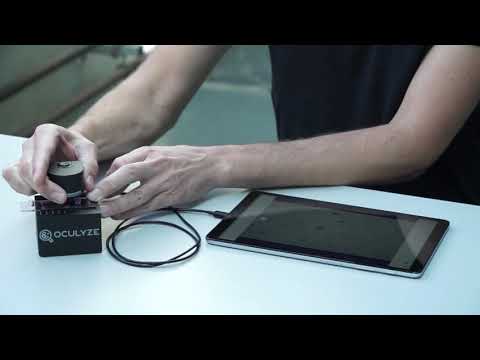Fermentation Wine (FW)
The Oculyze yeast cell counting kit is the fastest, easiest, and most affordable way to analyze your yeast. You get complete control over the entire fermentation process, which allows you to intervene in time to prevent serious and costly issues such as stuck fermentation.
With Oculyze, propagating wine yeast to reduce your production costs becomes an uncomplicated and fully controllable process, as you can monitor the yeast growth and check the cell concentration and viability of your yeast in no time.
Get access to a fully functional demo account. Completely free of charge and with no commitment to purchase.
Free Test Account
How it works
10x faster than manual counting
Zero expert knowledge needed
More accurate than human counting
Step #1
Load the sample chamber with your diluted and stained yeast and put the chamber into the microscope.
Step #2
Connect the microscope with your mobile device and open the Oculyze App or connect it to your computer and open our Web App.
Step #3
Take five images moving the sample chamber into its predefined positions.
Step #4
Review analysis results directly in the app and predict issues in your fermentation while you still have time to react.
Give it a try!
Get access to a fully functional demo account. Completely free of charge and with no commitment to purchase.

Demo Video
A short demonstration of how to use Oculyze Yeast Cell Counter. Get to know the basics and how easy it can be to check your yeast concentration and viability.
Frequently Asked Questions
-
The fermentation analysis is possible for all sorts of wines. The Oculyze Fermentation Wine (FW) app can easily handle wine with an own rich color and/or a visible amount of suspended particles. The Fermentation Assistant feature has been developed to give you well-founded warnings for the following types of wine: red wine, white wine, rose wine, blanc de noir, and sparkling wine. If you make a different type of wine, please feel free to reach out to us for further support via our contact form.
-
Our microscope has a magnification of ~400X and allows for the visualization of objects less than 10µm. If you measure in an undiluted sample, the optimal range is 8.5×10⁵ – 3.5×10⁷ cells/ml (0,85 Mio. – 350 Mio). However, if you have higher concentrations, you can always dilute your sample to fit within this range.
-
The automated solution is optimized for normal Saccharomyces Cerevisiae strains (i.e. bakers or brewers yeast) and Saccharomyces Pastorianus strains and does not check for bacteria. However, the app also has a manual count option available which will allow you to count anything you want, including bacteria like lactobacillus.
-
Our advanced image recognition has been developed and improved constantly over several years. It is able to identify even strongly clustered cells.
-
Our image recognition will automatically detect budding cells and handle them as recommended by leading experts in the field of yeast management. For concentration they are only included if they are at least half the size of the mother cell; smaller buds are ignored. For the viability calculations, budding cells are ignored if the mother and/or daughter cell are stained, as they often cannot metabolize the dye correctly.
-
Methylene violet can offer some advantages; it performs better in growing phases of yeast cells (i.e. exponential and stationary) as well as for cultures with viabilities lower than 90%.
-
Yes, there is an option to connect your existing laboratory microscope. For this setup you would require a microscope with a 40X objective lens, a hemocytometer (Neubauer/Thoma chamber) and a compatible camera which gets mounted to your microscope. For more information and individual support please reach out to us via our contact form.
Additional Information
The Evolution to Automated Yeast Counting: How Technological Innovations Benefit Wine Quality
Viability and Vitality in Winemaking: What’s the difference? What you should know to ensure a healthy wine fermentation?
Introduction to Wine Fermentation
Yeast monitoring helps to reach the full potential of wine